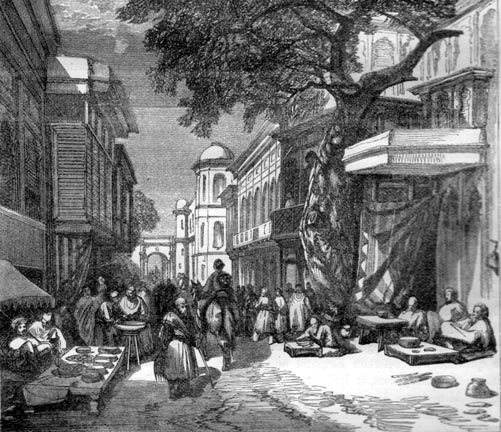 THE first name that comes up whenever a book reference is needed on the city of Lucknow is 'Guzishta Lucknow'. The book is a detailed historical account of the Lucknow society during the Nawabi rule by Maulana Abdul Halim Sharar. Maulana Sharar took out several magazines during his lifetime, his most famous being 'Dilgudaaz Lucknow' [ENG: Beloved Lucknow.] In that magazine Sharar wrote a series on Lucknow by the name of "Hindostan me mashriqi tamaddun ka akhri namoona" [Lucknow : The Last Phase Of An Oriental Culture.] It ran for years and was warmly received. The same was later turned into Guzishta Lucknow the book.
THE first name that comes up whenever a book reference is needed on the city of Lucknow is 'Guzishta Lucknow'. The book is a detailed historical account of the Lucknow society during the Nawabi rule by Maulana Abdul Halim Sharar. Maulana Sharar took out several magazines during his lifetime, his most famous being 'Dilgudaaz Lucknow' [ENG: Beloved Lucknow.] In that magazine Sharar wrote a series on Lucknow by the name of "Hindostan me mashriqi tamaddun ka akhri namoona" [Lucknow : The Last Phase Of An Oriental Culture.] It ran for years and was warmly received. The same was later turned into Guzishta Lucknow the book.Sharar's Urdu is reminiscent of a glorious past. A past where city of Lucknow reached its zenith in terms of its rich traditions and culture. To read Guzishta Lucknow is like walking through a city which slowly but surely outshined its elder brother - Delhi. The Nawabi patronage to arts and the difficult affairs at the Moghul Capital, Delhi, brought Lucknow into prominence. This was also the time when Persian reigned supreme at the court of Awadh. Not surprising as the Nawabs came from Iran.
The book gives you an insight into the daily lives of the Nawabs and the commoners of the city. The author has managed to capture even minor details like how the paan (beetle leaf served as a breath freshener) was served during social gatherings in his account of history.
Guzishta Lucknow is filled with countless lesser known facts and fascinating stories about yesteryear's Lucknow. The author tells us that it was actually Faizabad (a city close to Lucknow) where the Nawabi rule originated and initially flourished. Most of today's so called old city areas came up during the period of Nawab Asafi-ud-daulah. His son's Wazir Ali Khan's wedding had 1200 elephants, and the bridegroom dress was studded with Rupees 2 million worth of precious stones. Nawab Sa'adat Ali Khan was responsible for the establishment of many old markets such as Sa'adatganj, Rakaabganj, Maulviganj, Golaganj and Rastogi mohalla. He also built Motimahal. Nawab Ghayasuddin Haider started the practice of animal fighting in Lucknow. His wife on the other hand pioneered numerous new and controversial Shia practices. A cook named Muhamdoo in the period of Nawab Nasir-ud-din Haider invented the sheermaal (a popular orange coloured local bread). Nawab Amjad Ali Shah established Hazratganj and connected Lucknow and Kanpur with a road link. During his tenure, his minister Amin-ud-daulah inhabited Aminabad. Nawab Wajid Ali Shah never danced in his life as many believe.
The book is a slow read specially through the end and lacks continuity. This could have been avoided if the magazine articles were better edited and adopted. Also, the author's uninhibited love for Lucknow makes him a little biased towards Delhi in his account.
If you are from Lucknow or if history interests you then Guzishta Lucknow would be an enjoyable read. Lucknow has rarely been portrayed this lovingly.
2 comments:
Can we have any online / pdf link to this historical book.
Very difficult to get one. In fact the original urdu version is currently unavailable in Lucknow.
Post a Comment